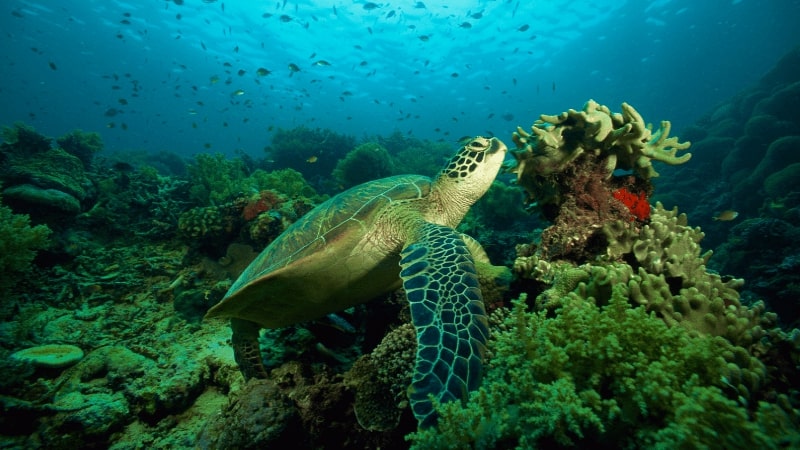Published:

Every three to four years, green sea turtles that hatched on Ascension Island swim hundreds of thousands of kilometres to return and nest on its beaches.
Charles Darwin brought the journey to the scientific community's attention in 1873 and since then the question has remained: how do the turtles find their way across the Atlantic Ocean to this tiny island?
Professor Kevin Painter, a mathematical biologist from Heriot-Watt University in Edinburgh, and colleagues have developed a model that simulates part of the turtles' journey and tells us more about the information that turtles rely on to navigate to Ascension Island.
Professor Painter said: “Almost 150 years after Charles Darwin highlighted the migration, we still don't understand exactly how sea turtles navigate there.
“The remote location and the fact the turtles only make the journey every three or four years makes it difficult to conduct fieldwork.
“That's why modelling can be such a powerful tool; it's so difficult to study these navigations in the real world that a verified model can provide theories and more insight.”
Scientists have believed that the turtles, like other animals, respond to cues from nature that help them navigate, from detecting changes in the magnetic field to following currents or detecting odours.
Professor Painter's model suggests that using a combination of multiple cues turns out to be greater than the sum of the parts.
“Our model revealed that multimodal strategies, when turtles use a range of cues to navigate, generally improve homing. It's not just one cue, such as a reaction to the magnetic field, an inbuilt compass or following an odour. More weak cues are typically more successful than fewer strong cues.
“This makes sense, as relying on a single navigating cue could render a population sensitive to change, whether natural or otherwise, and lead a turtle into “blind spots”.
The next step for Professor Painter is to extend the model to better understand the turtles' whole journey from Brazil to Ascension Island.
“Modelling the entire, multiple month journey is a much grander challenge, but we've already started working on that.
“These great navigations are fascinating, whether its turtles arriving at Ascension Island or salmon managing to find their way back to the river they were spawned in. Understanding how fish, animals and birds navigate means we understand how to protect those that are endangered, and what is having an impact on their behaviour.”
Professor Painter's research was published in Ecological Modelling.